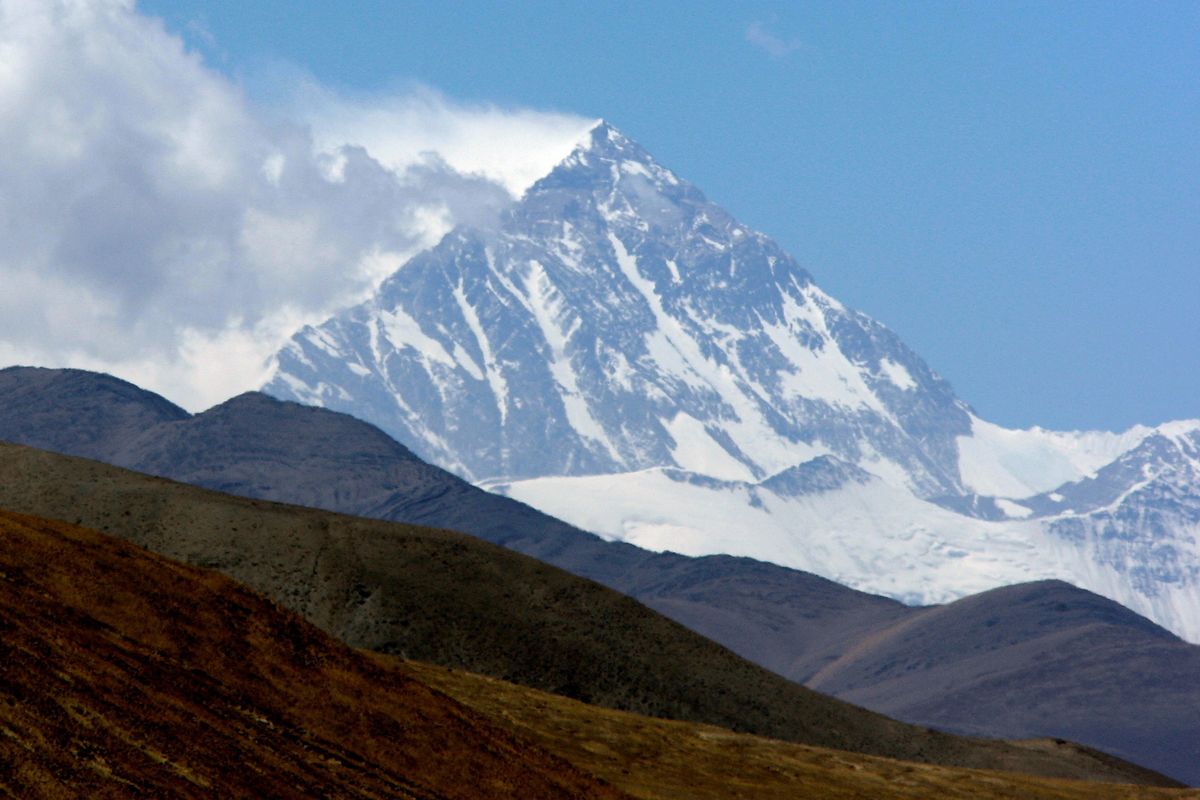News Desk
The News Desk provides timely and factual coverage of national and international events, with an emphasis on accuracy and clarity.

Mount Everest, known in Tibetan as Qomolangma, rises behind foothills, as seen from near the Tibetan town of Shegar, April 27, 2008.
Reuters
This finding not only applies to Everest but also to nearby peaks such as Lhotse and Makalu
Geological process at work is called isostatic rebound
Mount Everest, the world’s highest mountain, has been growing for approximately 50 million years. However, a new study published in Nature Geoscience reveals that it is growing taller faster than previously expected.
The surprising cause? Erosion from rivers located miles away from the peak.
Led by geoscientist Jin-Gen Dai of the China University of Geosciences, researchers have discovered that rivers roughly 47 miles away from Everest are contributing to its accelerated height increase. These rivers, which flow through the steep terrain of the Himalayas, are removing significant amounts of rock from the range. Rather than reducing the mountain's height, this process has caused the Earth’s crust beneath Everest to rise.
"Although mountains may appear to stand still from the perspective of a human lifetime, they are in fact constantly in motion," Dai told the New York Times. The researchers found that the erosion of rocks by these rivers lightens the load on the Earth's crust, allowing it to “float” higher on the planet’s mantle—a process known as isostatic rebound.
This uplift is particularly noticeable on Mount Everest, where the Arun River was captured by the Kosi River network approximately 89,000 years ago, dramatically increasing the erosion in the region.
According to Dai and his team’s models, this merger has led to enhanced erosion, which in turn is responsible for adding around two millimeters to Everest’s height each year. Over time, this has resulted in an additional 50 to 165 feet of elevation.

"It’s a bit like throwing a load of cargo off a ship," explained Adam Smith, a geoscientist at University College London, to the BBC. "As the crust becomes lighter, it rises higher, just as a ship floats higher when its load is reduced."
This finding not only applies to Everest but also to nearby peaks such as Lhotse and Makalu, which are the fourth and fifth tallest mountains on Earth. The same process is contributing to their growth as well. While tectonic plate movement between the Indian subcontinent and Asia continues to push the mountains upward, the influence of river erosion on this growth has provided scientists with a new understanding of how Himalayan peaks evolve.
Isostatic rebound isn’t unique to the Himalayas. A similar process occurs when massive continental ice sheets melt, as seen at the end of ice ages. As these sheets retreat, the Earth’s crust compensates for the loss of mass, causing the land to rise in some areas and sink in others.
This process even affects modern sea levels. For example, New York City experiences higher-than-average sea-level rise because the Earth's crust is still sinking in response to the melting of a vast ice sheet that once covered parts of North America around 24,000 years ago, according to NASA.
Scientists are now studying whether other peaks and mountain ranges could be affected by similar erosion-driven processes. “There are other river captures known to have occurred in the Himalaya,” says Elizabeth Dingle, a geomorphologist at Durham University in England, who was not involved in the study. Speaking to The Guardian, Dingle noted, “It would be interesting to know whether similar effects are preserved elsewhere, or in other tectonically active mountain ranges.”
Mount Everest has long been a symbol of human endurance and ambition. “Physically, it represents Earth’s highest point, giving it immense significance simply by virtue of its stature,” Dai told Reuters. “Culturally, Everest is sacred to local Sherpa and Tibetan communities, and globally, it symbolizes the ultimate challenge—embodying human endurance and our drive to surpass perceived limits.”







Comments
See what people are discussing